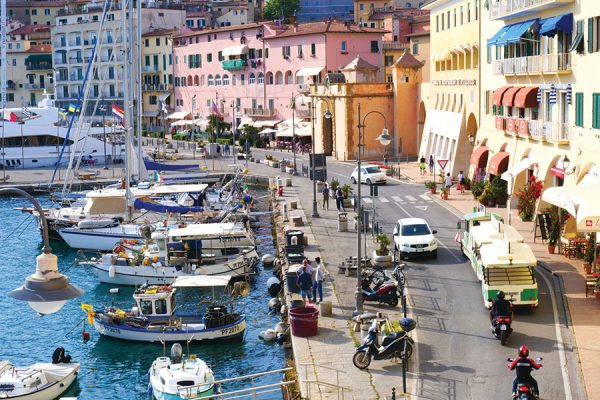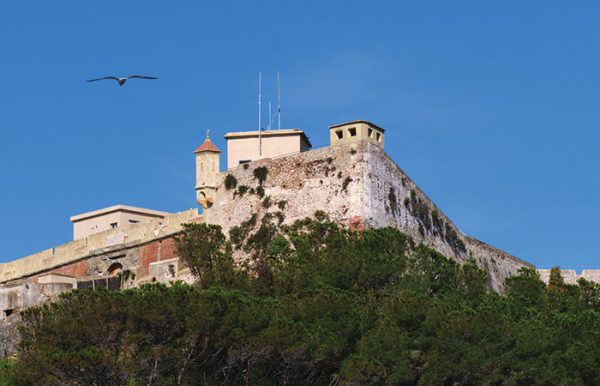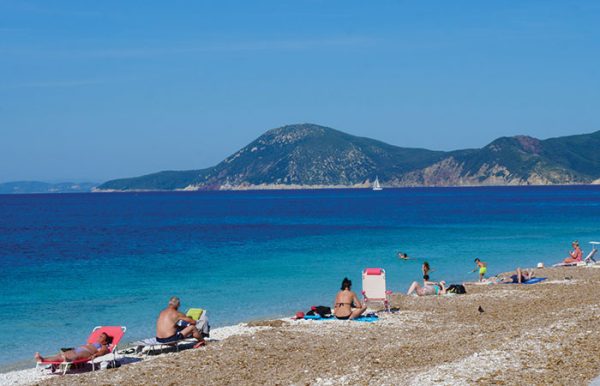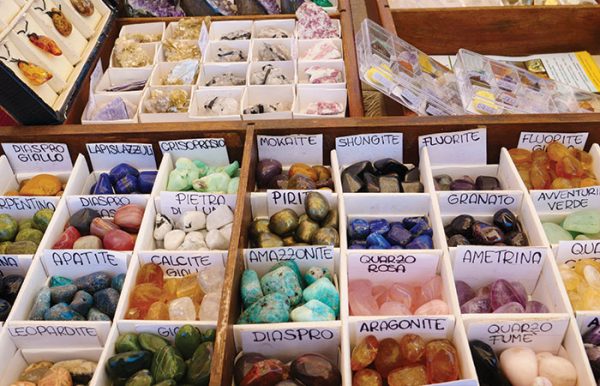Spending a weekend in Elba’s capital Portoferraio is the best introduction to the island, says Jane Gifford

Mythology has it that Aphrodite, the Greek goddess of beauty and love, was visiting one of her many lovers on the Italian mainland when she accidentally broke her string of pearls, and in doing so formed the Tuscan Archipelago, the chain of islands that straddles the Tyrrhenian and Ligurian seas between Tuscany and Corsica, of which Elba is by far the largest.
And it was here on Elba, on the island that the Greeks called Aethalia – and specifically at Le Ghiaie, which we will be visiting ourselves in due course – that Jason and the Argonauts are said to have landed after taking the Golden Fleece. They played discus with the pebbles they found on the beach.
Today the seven islands of the Tuscan Archipelago – Elba, Giglio, Capraia, Montecristo, Pianosa, Giannutri and Gorgona, plus a few other uninhabited rocks – are part of a designated marine reserve.
You will also know that Elba was a place of exile for Napoleon Bonaparte; it was granted to him in return for his abdication as Emperor with the signing of the Treaty of Fontainebleau in 1814.
Beyond this, however, you may not know much about the place. Elba is a secret that the British are largely yet to discover. Spending 48 hours in Portoferraio, Elba’s capital, seems the perfect introduction.
I would recommend visiting out of season, and especially in May. The sea is warming up but very clean, the beaches are relatively quiet, and the macchia mediterranea, (le maquis, in French, and sometimes English) the wild coastal scrubland, is in colourful bloom.
Magical Journey
The ferry crossing makes the journey magical. Elba comes into sight within the hour. High mountains covered in woodland. The ruins of the Castle of Volterraio look over the island from a mountain peak. There is history here: Volterraio is thought to be of Etruscan origin.
The impressive sight of Portoferraio (Iron Port) follows, dominated by Forte Falcone to the east and the lighthouse to the west, which was erected in 1788 on 16th-century Forte Stella.
The harbour is sheltered from most winds and is said to be the safest in the Mediterranean.

Boats fill the harbour. Pastel-coloured, multi-storeyed buildings line its circumference, as do many harbourside cafés and bars. We dock around the corner in the ferry port. You can rent a car directly from here. I hoped to use buses but a strike made this unreliable.
Near the ferry port is Zero Gradi. Try their wonderful organic ice cream or cool down with some granita. The gelateria is popular with the Italians, who know their ice cream. There are now six shops dotted around Elba.
Listen to the town waking up. A woman’s voice announces the first ferry leaving Elba at six o’clock. The whistling street cleaners begin work. Portoferraio is spotless compared to England’s capital. Then the anglers, cyclists, moped-riders and fishermen begin talking loudly to one another.
The cars join in, carrying people to work. The buses pass by below. The tourist train rings its bell. Finally, cafés around the harbour begin to fill with customers. You are right in the centre of the action, looking towards Napoleon’s Gate, where he is reputed first to have entered the old town in 1814.
The Old Town
The old town, built into the hills surrounding modern Portoferraio, is a 500-year-old maze of alleys and steep staircases, worn uneven by time, lined with churches and tall, green-shuttered houses. The steep streets billow with laundry and are full of surprises, like an orphanage, a children’s home and the Teatro dei Vigilanti, the theatre built by Napoleon for his sister, which was once a church.
Portoferraio was named Porto Argo in legend and Fabricia by the Romans. Napoleon made the town the capital of Elba and named it Portoferraio.
Previously it was called Cosmopolis, after Cosimo de’ Medici, the 15th-century banker and politician who established the Medici family as rulers of Florence.
Forte Falcone was built in the 16th-century. Follow signs in the old town to Villa dei Mulini. The fort is the perfect place to visit if you are going to Napoleon’s residence.
Villa dei Mulini is named after the windmills which Napoleon had demolished to build his residence. It now contains a museum dedicated to Napoleon. It is painted canary yellow and the garden overlooks Portoferraio’s lighthouse.
You can imagine Napoleon looking out to sea, plotting his escape. Inside are statues, a campaign bed and period furniture. There is also an old wooden lavatory which inevitably conjures images of the man.
Forte Falcone
Climb up to Forte Falcone before it gets too hot. It’s open from 9am to 4pm. It’s worth the effort, rewarding you with unbeatable views over Villa dei Mulini, the old town, the Tyrrhenian Sea, Elba’s mountains and the old harbour.
You can also see the headland of Capo Bianco and Portoferraio’s many beaches. There is a small museum dedicated to Cosimo de’ Medici and a snack bar.
Forte Falcone was badly damaged during the second world war. It is built on many levels and has been sympathetically restored. The ramparts are largely original, with fig trees on the terraces.
Prickly pears, planted for the tourists, are in bright yellow bloom in May and everywhere there are poppies and purple convolvulus. A lizard scuttles behind a sign advertising the many rare orchids that grow here.
The walk down to the town is steep and often without a hand rail. Don’t try it in the rain if you have problems with steps. Many parts of the centro storico and Forte Falcone are unsuited to wheelchairs.
On the other side of Portoferraio from the old harbour is Le Ghiaie, a white pebbly beach which is said to be where Jason and his Argonauts landed.

Considering we are in the centre of town, the beach and water is phenomenally clean. The colour is accentuated by the white pebbles.
They inspired artist Alfredo Gioventù, who was commissioned by Elba’s perfumier, Acqua dell’Elba, to make their diffusers. The pebbles are dotted with black tourmaline, which he imagined could be a message from the sea, musical notes played by the sea on the pebbles – or maybe the dark flecks are constellations.
Then there is the Archeological Museum in Linguella Fortress with its impressive background of Portoferraio’s Torre del Martello (also known as Il Torre del Passannante), one of the first things you see when you enter the old harbour.
Here, next to the Martello Tower, is the excavation of a large Roman villa. There are ornate bells and an ancient granite altar outside. Inside are finds from Etruscan, Roman and medieval times which document the many millennia that Elba has been inhabited.
Porto Azzurro
Over the opposite side of the island (south) around 20 minutes drive away from Portoferraio is Porto Azzurro. It makes a good contrast to Portoferraio, being specially designed for tourists.
It too is dominated by a fort, the 17th-century Forte Giacomo, built by the Spanish as Forte di Longone.
From the 19th-century this was used as a prison, and became famous for its celebrity prisoners, mostly those associated with the Mafia.
The authorities felt this gave the place a bad name, so the town’s name was changed from Porto Longone to the more gently appealing Porto Azzurro. The original small fishing village was enlarged for tourism in the 1950s.
Porto Azzurro is built around café-lined Piazza Mateotti, overlooking the marina. You can rent a boat here by the hour. The streets and square are festooned with jasmine. Some restaurants stand on stilts above the sea, like Il Delfino Verde and La Caravella, some of the oldest restaurants here.
Tour the backstreets, where you can enjoy Elban specialities. You may not see the sea, but the food is less expensive and makes up for any lack of view.
Try schiaccia briaca, Elban flatbread topped with pine nuts, raisins and dried fruit. It used to be made for sailors to take to sea.
Aleatico red wine is added, giving it its red colour. If you like dry white wine with character, look out for local whites made from DOCG Ansonica grapes. For red or rosé, choose wine made from Aleatico grapes.

Porto Azzurro capitalises on its mineral connections, selling jewellery based on the stones found on Elba.
There are exclusive shops too, such as Locman, whose watches are made here on Elba, and Acqua dell’Elba, the ubiquitous perfume that is literally synonymous with the island itself.
There are still elements of the old town to discover, like the public baths (still in use), where you can get a shower for €2.50, or the ghost of the old open-air cinema, which was once popular here.
An easy 20-minute walk around the coast from here is Barbarossa Beach, named after the 16th-century Ottoman pirate.
On the way to Porto Azzurro you pass the turning to Capoliveri, a hill-top town with a high street rammed with tourist shops and places to eat. Turn off the main drag and eat at Da Mario’s. The food is delicious.
To see the macchia mediterranea at its best, follow the road out of Capoliveri to Ripalte. It soon turns into a dirt road, often single-track, lined with yellow broom, purple thistles, rock-roses and wild sweetpeas, along with poppies, fennel, corn marigolds, white chamomile and Queen Anne’s lace.
Drive slowly and don’t be put off, as there are pull-offs and passing bays.
Eventually you will be rewarded by Tenuta delle Ripalte with its own private beaches: Calanova, with a restaurant and an extensive view across the bay towards 17th-century Forte Focardo; and Remaiolo, which offers snacks in a bar shaded with pines.
These are reached down steep dirt roads by car or with the shuttle bus. Ripalte’s food is very creative, drawing on local ingredients and served with delicious wines from the estate, which went fully organic last year.
Even the bees are from Ripalte’s own hives. It’s the little touches that make it special – fresh local flowers themed in pale blue and white; crisp, white linen table cloths; a pashmina if you eat outside and it gets a little cold; straw hats if it’s too warm; discreet and obliging service; all the toiletries in your room by Acqua dell’Elba.
Elba has a reputation for being expensive, especially with today’s exchange rate. It certainly can be, but it’s worth the expense. The island has it all.
All images © Jane Gifford
For more travel blogs, visit our archive
